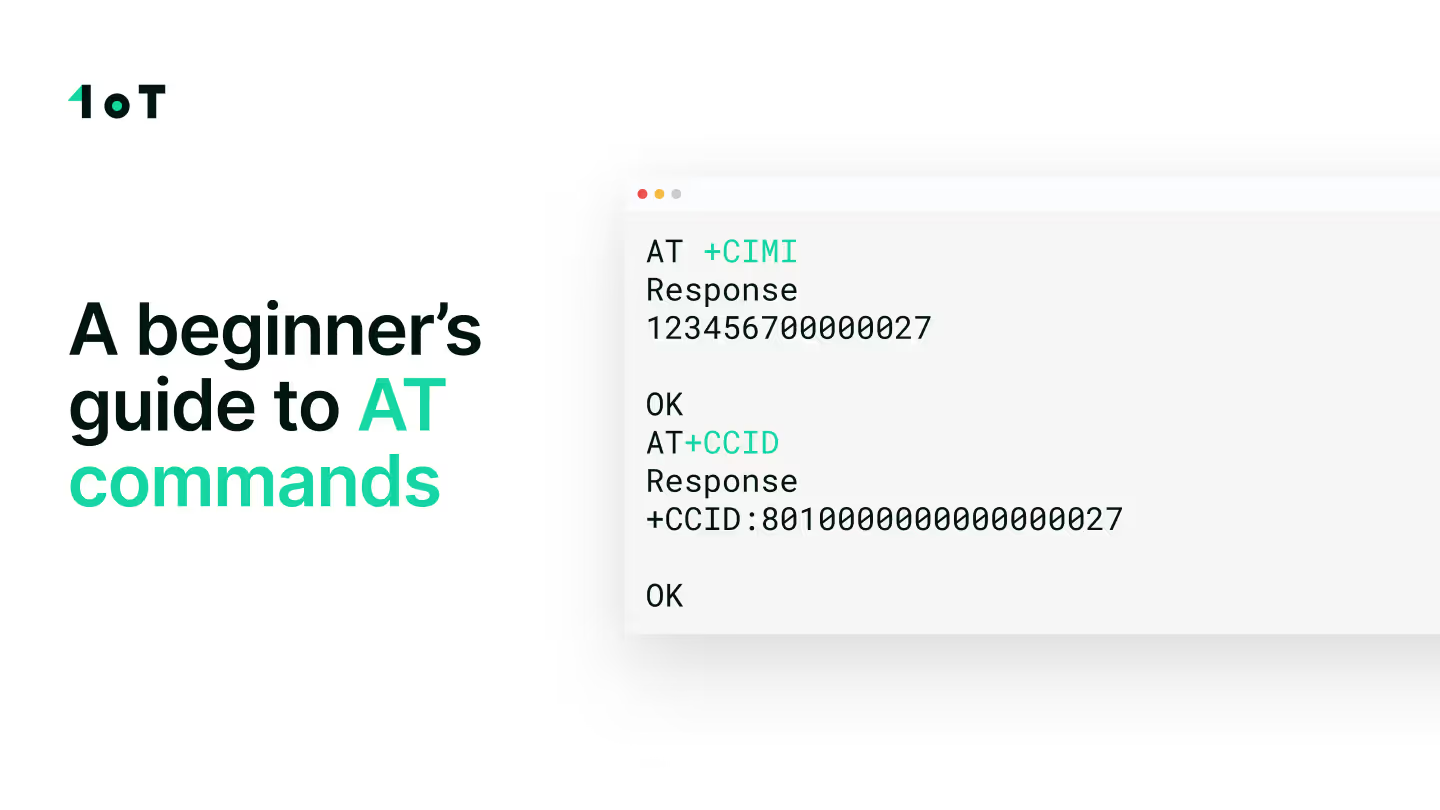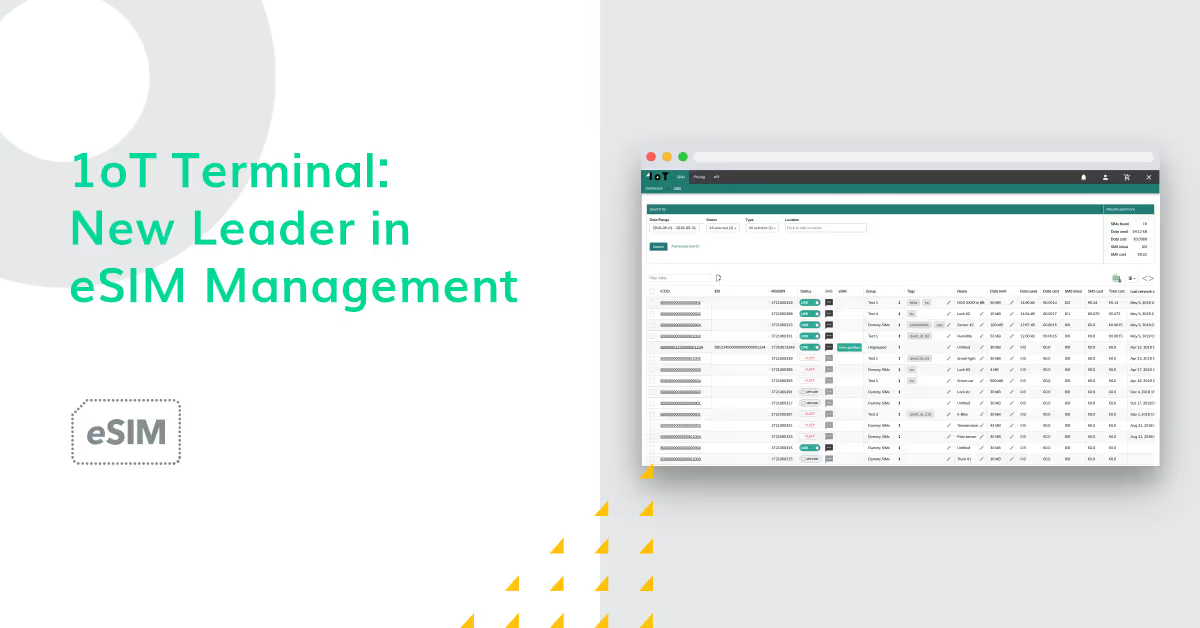Powering autonomous vehicles with IoT connectivity

Autonomous vehicles, including package delivery robots and teleoperated vehicles, represent a groundbreaking evolution in transportation and logistics. These vehicles are designed to operate with minimal direct human intervention, utilizing a combination of advanced technologies to navigate, perceive their environment, and execute tasks efficiently. Over time, the technology behind autonomous vehicles has undergone significant advancements, enabling greater autonomy, safety, and reliability.
In this article, we will focus on the connectivity elements of autonomous and teleoperated vehicles and the importance of a connectivity management platform and suitable hardware. Additionally, Auve Tech’s Fleet Operations Lead, Deivis Sepp, will pitch in about the challenges autonomous vehicle manufacturers face and how they’ve solved them.
The importance of cellular connectivity in autonomous vehicles
Autonomous vehicles are categorized from levels 0 to 5. Level 0 vehicles have no automation and require the driver to perform all the actions. Level 5 vehicles are fully automated and don’t need any intervention from the driver. While car manufacturers are working towards leveling up their cars’ autonomous capabilities, reliable connectivity will play an increasingly important role.
IoT devices embedded within vehicles enable real-time communication with centralized control systems, allowing for remote monitoring, diagnostics, and software updates. Cellular connectivity ensures seamless communication between vehicles, infrastructure, and other stakeholders, facilitating coordination and collaboration in dynamic environments.
For example, autonomous vehicles rely heavily on sensors such as LiDAR (Light Detection and Ranging), cameras, radars, and GPS (Global Positioning System) to perceive their surroundings and make navigational decisions. Additionally, machine learning algorithms play a crucial role in processing sensor data and making real-time decisions, allowing vehicles to adapt to changing environments and unexpected obstacles.
In recent years, there has been a notable shift towards incorporating more sophisticated artificial intelligence (AI) and deep learning techniques into autonomous vehicle systems. This has enabled vehicles to not only recognize objects and navigate complex environments but also to learn from their experiences and improve their performance over time.
As the autonomy of those vehicles depends on large data sets, cellular connectivity provides the possibility to quickly upload or send the data to relevant teams within the organization for analysis or implementation. This removes the need for local hard-drives and Field Application Specialists for migrating the collected data.
One of the most critical parameters with teleoperated vehicles is the latency and round-time trip (RTT). Latency depends on many external factors, but the highest contributors are:
- Cellular network coverage and available bands in the operation area.
- Packet Gateway (PGW) location(s) - an instance where the data is broken out. For example, when operating in the US, you want to break out the data within the US, not send the data back to the EU and then to your cloud, thus increasing the latency.
Cellular connectivity’s quality also affects the device’s packet loss, which is partially related to the PGW location and signal quality in the area, and service uptime, which is especially critical for autonomous vehicles.

Network challenges for autonomous vehicles
Although cellular connectivity is vital for these vehicles, it also comes with challenges that can slow down operations.
According to Auve Tech’s Deivis Sepp, “Network coverage is a significant challenge for autonomous vehicles. Achieving consistent and widespread coverage, especially in rural or remote areas, is difficult.”
Another hurdle is achieving adequate bandwidth and low latency, which are essential for handling the large data volumes that sensors and cameras generate in real time.
Finally, like all IoT devices, autonomous vehicles are receptive to cyber-attacks and unauthorized access. Since they consume large amounts of data, device owners need to put strong emphasis on security to avoid interference that can disrupt communication signals and result in device misuse.
Requirements for connectivity management
A connectivity management platform (CMP) is an essential tool for managing your fleet of SIMs effectively. A modern CMP enables controlling the full life-cycle of the SIM cards from the R&D phase to production and deployment. This includes IMEI pairing and linking SIM identifiers (eID, ICCID, IMSI) with the device’s internal serial number or other identifier (e.g. license plate number) for easier management and visibility. Furthermore, a CMP will provide a set of tools to track the device’s data consumption behavior and define specific rules for notifications or automations.
Apart from the network parameters and requirements, the connectivity management platform should support the following:
API availability: Integration options to manage your fleet of SIMs via API, enabling quick actions in the backend.
SIM-agnostic overview of your fleet to manage everything from one place regardless of which carrier’s SIMs they are. 1oT Terminal enables using (e)SIM profiles from different providers on the same platform and with the same API and endpoints. This opens up a significant opportunity for cost savings and better data routing options per deployment market or project using one platform and receiving a single invoice.
Flexible billing: Autonomous vehicle companies usually operate in multiple countries under different legal entities. The CMP should enable them to manage all those SIMs centrally but support billing different entities based on their operations.

How 1oT can help with your global operations and technical requirements
“To boost network stability, we've taken the proactive step of requesting dedicated M2M/IoT SIM cards from 1oT. These have proven to be highly effective in areas where internet usage surges during specific times and in regions with lower speeds.
This ensures a smoother, more reliable experience for everyone, allowing us to stay seamlessly connected and operate at peak efficiency no matter where we are. The remarkable difference has brought a newfound consistency and reliability to our network that we're thrilled to see.”
– Deivis Sepp, Fleet Operations Lead at Auve Tech
- One of the main problems autonomous vehicle operators or teleoperated providers have is data costs. Some devices can use 200–500 GB monthly, so the standard IoT pricing schemes will not work. At 1oT, we aggregate different telecoms and can use our existing telecom network to find localized options via UICC or eUICC profiles to optimize your costs and address your technical parameters, such as latency requirements.
- 1oT eSIM enables you to use one stock-keeping unit (SKU) that’s used with the vehicle’s communication device and can be deployed globally. Once the device reaches its destination market, you can select a suitable profile from our eSIM Management Tool.
- Our CMP, 1oT Terminal, is one of the most modern connectivity management platforms integrated with 1oT M2M eSIM Core (Remote SIM Provisioning System) and allows you to compare telecom profiles and provision a suitable profile. Terminal has the functionalities to manage (e)SIMs, data plans and pools, set up notifications and automations, measure KPIs, and analyze operational costs. For more information, check out the Terminal walkthrough.
- Our experienced team can advise you not only from the cellular connectivity perspective but also regarding hardware. Since connected vehicles need more throughput and bandwidth, regular IoT communication modules or routers might not be sufficient. 1oT can leverage our extensive partner ecosystem to find suitable hardware for your exact needs.
“Autonomous vehicles require precise connectivity and control, so meeting their needs has led us to improve our connectivity service and CMP.
Strong partnerships are key to innovation, and 1oT has worked with exceptional partners in the autonomous vehicle space, refining our eSIM-based solutions to meet their specific needs.
1oT is focused on continuous improvement, and the new IoT eSIM (SGP.32) will mark a new era for global deployments, making them more effective and seamless.”
- Mikk Lemberg, Chief Product Officer at 1oT
Looking ahead, the continued advancement of technologies such as 5G connectivity, edge computing, and vehicle-to-everything (V2X) communication will further enhance the capabilities of autonomous vehicles. These advancements will allow vehicles to interact more intelligently with their surroundings, anticipate potential hazards, and operate safely in increasingly complex urban environments.
As the technology matures and regulatory frameworks evolve, autonomous vehicles are poised to revolutionize the transportation and logistics industry, offering unprecedented levels of efficiency, convenience, and sustainability.
About Auve Tech
Auve Tech is an Estonian company specializing in the development and manufacturing of autonomous transportation systems, particularly driverless shuttles. Founded in 2019.
Auve Tech focuses on creating autonomous vehicles that cater to first-and-last-mile transportation needs, aiming to extend public transportation systems and reduce the reliance on personal cars. Their products are designed to operate in various weather conditions and environments, enhancing the reachability and efficiency of public transport.
About 1oT
1oT’s eSIM connectivity service aims to eliminate vendor lock-in and put speed and flexibility at the heart of the IoT industry.
1oT offers 12 different telecoms profiles, so IoT companies can choose the most optimal connectivity service according to their use case, region, and technology requirements. Today, 2 million IoT devices, from bird trackers to e-scooters, are using 1oT's connectivity services in 173 countries.
Contact us to discuss your fleet’s connectivity needs!














.avif)


















.avif)
































.avif)









































